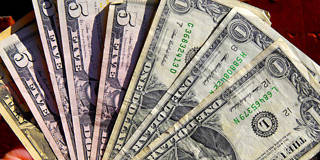Since the end of World War II, America’s share of global output has fallen from nearly 30% to about 18%, yet the US dollar retains its dominant position as the world’s reserve currency – and by a solid margin. When – and how – will that change?
FRANKFURT – Since the end of World War II, the United States’ share in world GDP has fallen from nearly 30% to about 18%. Other advanced economies have also experienced sustained declines in their respective slices of the global pie. But you wouldn’t know it from looking at the international monetary system.
Over the same period, China’s share of world GDP almost quadrupled, to around 16% (just behind the US), and emerging markets now account for about 60% of global output, up from about 40% in the immediate post-war years. Given that advanced-economies’ growth prospects remain subdued, these trends are likely to continue – even with the evident slowing in China and other emerging markets.
And yet global finance has not mirrored this shift in balance from the advanced to the emerging. The post-war Bretton Woods arrangements institutionalized the role of the US dollar as the main reserve currency, and until the 1970s, about two-thirds of global GDP was anchored to the greenback. The remainder was largely split between the British pound and the Soviet ruble.

FRANKFURT – Since the end of World War II, the United States’ share in world GDP has fallen from nearly 30% to about 18%. Other advanced economies have also experienced sustained declines in their respective slices of the global pie. But you wouldn’t know it from looking at the international monetary system.
Over the same period, China’s share of world GDP almost quadrupled, to around 16% (just behind the US), and emerging markets now account for about 60% of global output, up from about 40% in the immediate post-war years. Given that advanced-economies’ growth prospects remain subdued, these trends are likely to continue – even with the evident slowing in China and other emerging markets.
And yet global finance has not mirrored this shift in balance from the advanced to the emerging. The post-war Bretton Woods arrangements institutionalized the role of the US dollar as the main reserve currency, and until the 1970s, about two-thirds of global GDP was anchored to the greenback. The remainder was largely split between the British pound and the Soviet ruble.